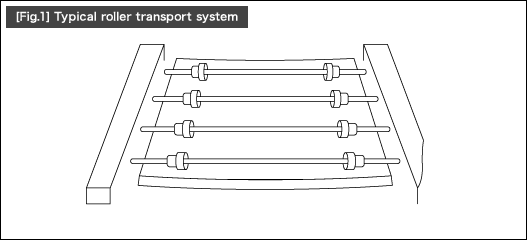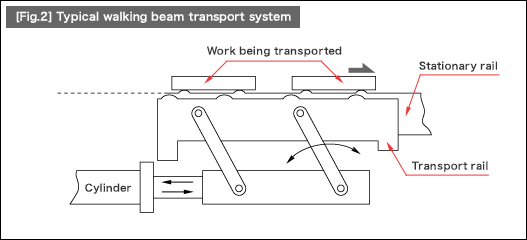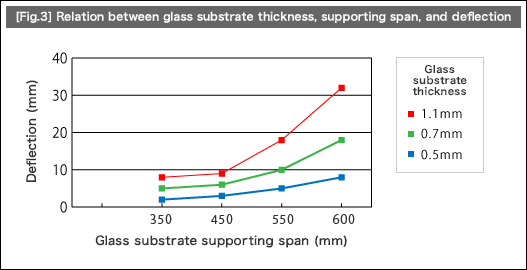#293 Know-how on automation: Transfer -1
General description
In a total of six installments, explanation is provided about designing of mechanical structure for transfer of thin sheets to respond to the trend for weight reduction. For transfer of glass substrates, two (2) major systems are available, roller transport (Figure 1) and walking beam transport (Figure 2). This session focuses on the roller transport system.
Explanation
1)Points to differentiate mechanical designs (The pursuit of rules and principles)
The transfer mechanism requires high versatility in its capabilities. Then, transport systems become similar to each other in design. In practice, however, where further advanced capabilities become required, those systems designed by understanding and incorporating rules and principles will be able to meet the specific application needs based on the original design or with only some improvements. Such systems that have a potential for quick response to varying needs will provide critical differentiation power, thereby contributing to the product development competition requiring shorter turnaround time.
2)Transport problems caused by glass substrates of reduced thickness and weight
-Regarding glass substrates, as the thickness becomes smaller, the deflection due to own weight abruptly increases as shown in Figure 3.
-As can be seen from the Figure, for glass substrates of 0.7 mm or less in thickness, a two-point holding system will be impractical for transport when the substrate holding span is larger than 450 mm.
-In addition, the glass substrates will be likely to become broken or fractured due to trouble during transport.
-Reduced thickness and weight causes the production line to become likely to suffer transfer problems listed below.
| 1. | Substrates are fed into the production line with the residual stress produced in the manufacturing of flat glass being left. Then, the state of the residual stress changes due to the effects of heat in the production process (bonding, printing, heat treatment, etc.), leading to complicated waviness in the initial substrate profile. | |
| 2. | Each substrate is transported by the frictional force produced depending on its own weight acting on the several feed rollers supporting the substrate. In practice, however, the frictional force can vary greatly at the contact points between the substrate and individual rollers due to any deformed substrate. If the frictional force on the feed rollers at the respective ends are not equal to each other, the substrate will be transferred curvedly. | |
| 3. | In the cleaning process, the substrates are transferred in the wet state, and then their coefficient of friction becomes smaller as compared to when they are in the dried state. As a result, in the cleaning process, the transport force becomes reduced and the transport speed becomes uneven, resulting in increased transport failures such as piled-up substrates. |
The above-described possible transport problems due to reduced thickness and weight must be resolved by the mechanical designers. The next session will explain the rules and principles about roller transport and their application to the mechanical design.



- Positioning technology
- Designing and processing
- Sensor Technology
- Automation elements technology
- Clean room technology
- Design hints
- Design tips
- Designing and Machining
- Drive mechanism design
- Hints on designing
- Linear Motion Components
- Locating Technology
- Manufacturing technology
- Motion mechanism design
- Pneumatic Drives
- Production Technology
- Technology Outlook
- General description
- Low-cost automation and materials
- Transfer LCA
- #333 Know-how on automation: Pressurized heating technology - 5: Multilayer pressurized heating process technique
- #332 Know-how on automation: Pressurized heating technology - 4: Points to remember when designing mechanism of pneumatic pressurization method
- #331 Know-how on automation: Pressurized heating technology - 3: Pneumatic pressurization method and pressure profile
- #330 Know-how on automation: Pressurized heating technology - 2: Pressurization method and pressure profile
- #329 Know-how on automation: Pressurized heating technology



